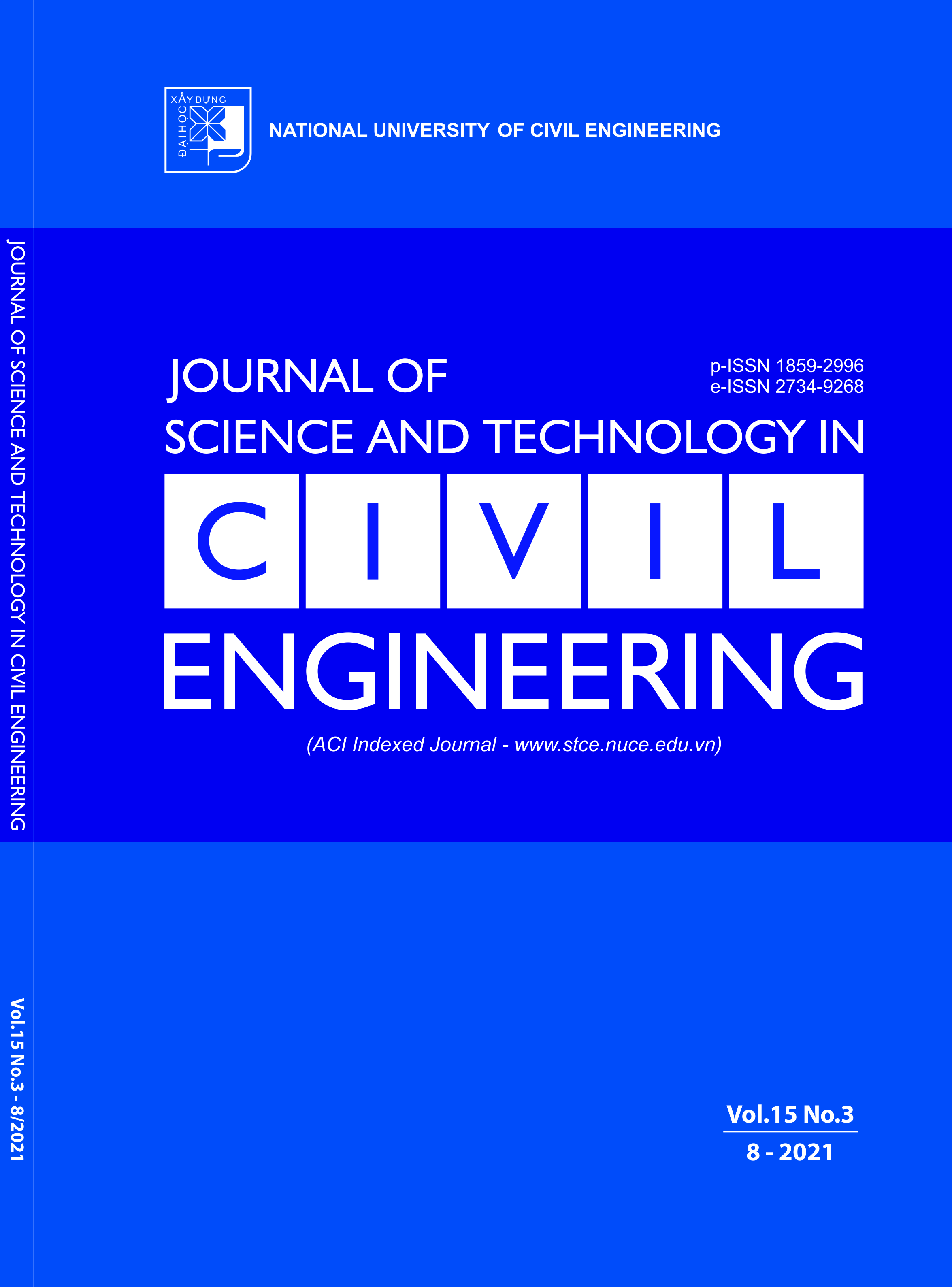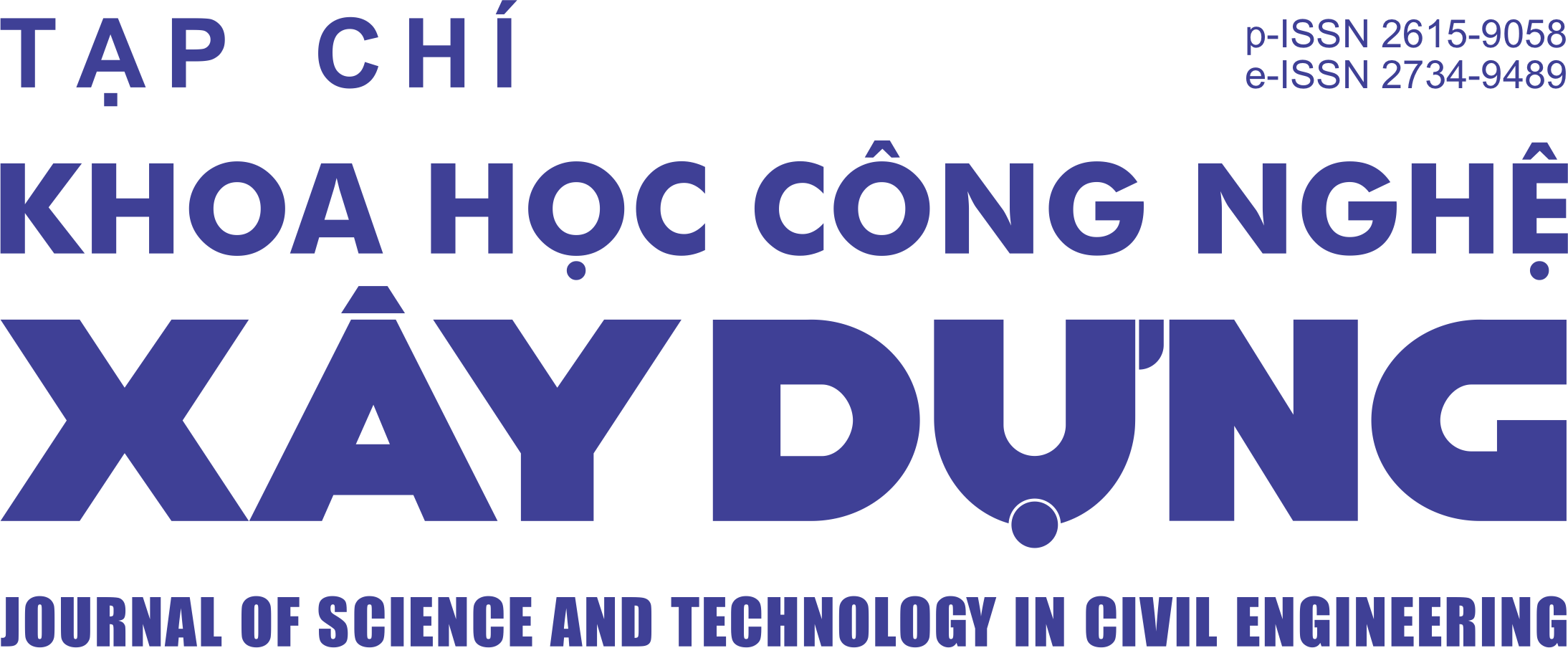Effect of uniform temperature load on design of long reinforced concrete structures without expansion joints
Abstract
This study presents an investigation on the design of long reinforced concrete (RC) structures subjected to uniform temperature load by considering three RC frame building models with different lengths of 45 m, 135 m, and 270 m using Etabs. The uniform temperature load is considered being the change from the annual average highest to lowest air temperature at the construction site in the case of unavailable temperature data of concrete. The analysis results indicate that the uniform temperature load mainly influences on the internal forces of RC members at storey 1 and slightly effects on the internal forces of RC members at storey 2. For short-length RC structures, the effect of temperature load can be ignored in the design of RC elements, whereas it must be taken into account in design of slab, beams and some column positions at storey 1 of medium-length and long RC structures without expansion joints. For the present RC frame building models, the required slab reinforcement in long direction increases about 33.4% for medium-length RC structures (135 m) and about 48.2% for long RC structures (270 m) without expansion joints. The required reinforcement for positive moment at mid-span increases from 33.7 to 39.4%, whereas the total required reinforcement for negative moment at the supports of beams increases from 19.4 to 34.9% in long direction of 270 m long RC structures without expansion joints due to uniform temperature load. Column design of long RC structures without expansion joints under uniform temperature load must be concerned, especially for columns in the corners.
Downloads
Copyright (c) 2021 National University of Civil Engineering

This work is licensed under a Creative Commons Attribution-NonCommercial-NoDerivatives 4.0 International License.
1. The Author assigns all copyright in and to the article (the Work) to the Journal of Science and Technology in Civil Engineering (JSTCE) – Hanoi University of Civil Engineering (HUCE), including the right to publish, republish, transmit, sell and distribute the Work in whole or in part in electronic and print editions of the Journal, in all media of expression now known or later developed.
2. By this assignment of copyright to the JSTCE, reproduction, posting, transmission, distribution or other use of the Work in whole or in part in any medium by the Author requires a full citation to the Journal, suitable in form and content as follows: title of article, authors’ names, journal title, volume, issue, year, copyright owner as specified in the Journal, DOI number. Links to the final article published on the website of the Journal are encouraged.
3. The Author and the company/employer agree that any and all copies of the final published version of the Work or any part thereof distributed or posted by them in print or electronic format as permitted herein will include the notice of copyright as stipulated in the Journal and a full citation to the Journal as published on the website.







